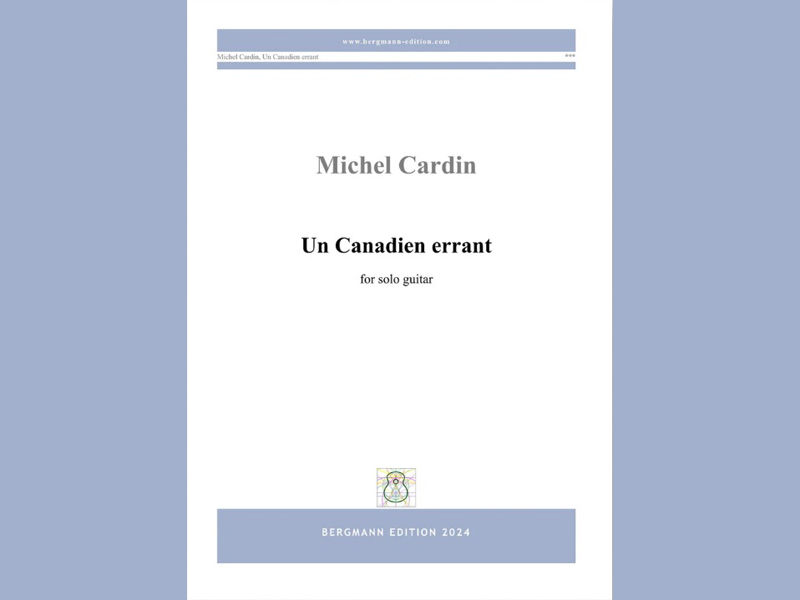Eleftheria Kotzia : Le Cahier de ma Guitare No3 : Mon Premier Recital : IMD
- chrisdumigan
- Dec 12, 2022
- 4 min read

Eleftheria Kotzia
International Music Diffusion: 40 pages
Greek guitarist Eleftheria Kotzia has here produced what is the third in an ongoing set of pieces aimed at giving the guitarist an interesting and useful set of pieces that they may want to include in their first recital. This latest book follows on from the previous No2, or alternatively is useful for any intermediate level player, and is a collection of 23 pieces ranging from the 16th to the 21st centuries, all written originally for the guitar except the Narvaez , Murcia, and Bach, some of which you may know and a few of which you most certainly won’t. They are in date order rather than difficulty order here, and being book three they are not what I would call easy, but definitely for the more advanced players amongst you.
So you begin with the only three pieces not originally written for our classical guitar, firstly, the vihuela piece of Luys de Narvaez, the famous Guardame La Vacas, the Baroque Guitar Giga, by Santiago de Murcia, and the Musette from the 3rd English Suite by J.S. Bach, all very useful pieces and ideal for an opening piece in any recital. All these pieces are carefully fingered by Eleftheria, and are beautiful pieces in their own right. Picking the pieces from the classical period with such vast amounts available could be difficult, but there are 2 pieces of Sor’s, the Galop from 6 Petites Pieces Op32, a fun piece of writing that shows just how much more interesting Sor’s guitar pieces are when compared with some of his contemporaries, and the Waltz from the same opus, another imaginative bit of writing. The two Carcassi pieces are The Etude No2, from Op60, a very arpeggio driven piece, almost entirely in semi – quavers and the Pastorale Op21, No16, a pleasant waltz – rhythmed piece in E minor /E Major, and finally there is another arpeggio piece by Aguado, Etude No19, made up of sextuplet arpeggio semi – quavers
The late 19th and early 20th Centuries begin with a piece by Pedro Antonio Iparraguirre, called Nardo, Vals, No1, of his El Ramillete, and a piece I haven’t come across before, nor a composer I have heard of either. This is a quick A minor waltz with a pleasant character, that moves into the tonic Major for its middle section. Two pieces by Paganini follow, the Allegretto paced Ghiribizzi Nos3, and 4, both entertaining little works that guitarists may not know. The little known Jacques Bosch is next with his Plainte Moresque Op85, subtitled Melodie Pour la Guitare, and having, as one might expect, some very Spanish sounds in its passagework. The wonderful Jose Ferrer’s Ejercicio in E Minor is next, and a piece that is lots of fun and very bright and breezy too. Luigi Mozzani’s Feste Lariane follows on , and is a gently Moderato waltz that I personally hadn’t come across before, set as a theme with 2 variations, the first being set in semi – quavers , and the second a tremolo variant in demi – semi – quavers throughout ending finally with a 2 bar coda that closes all three sections the same way. Two Tarrega works follow, the Etude No2, and Lagrima, perhaps two of the most famous pieces in this book, and after that a piece by Sagreras from his Tres Piezas Faciles Op19, the Maria Luisa Mazurka, a fun piece in triple time from a truly wonderful composer. One of the easier pieces by Barrios , the El Sueno de la Munequita , which is a lovely addition, follows , and is perhaps one of the very few of this master’s works that doesn’t require a hug technique to be able to play. This is the one with the final section that uses artificial harmonics for its melody section, and something that therefore does ramp up the difficulty somewhat! After the very famous Romance by Anon, (yes, that one!) we find the inclusion of Francis Poulenc’s only guitar piece , the Sarabande that he wrote for Ida Presti, a lovely piece in every respect, and one which only makes you wish he had written more for the guitar.
The final trio of pieces is all modern, and written especially for this book, beginning with Cancao de Embalar para Ines, by Silvestre Fonseca, a lullaby dedicated to his daughter, and a lovely piece of writing that uses the higher positions for much of the time without being too difficult, and with a beautiful melody and harmonies. Kostas Grigoreas’s 3 Etudes Simples Greques are unusual in their clever writing, but always tonal and make a satisfying little set. The final work is by my good friend and previous co – conspirator at the Classical Guitar Magazine, Steve Marsh., called Coldingham Bay, which is an area near the Scottish Borders. This lovely work is marked Lentamente con Sentimento and is warm and friendly, set in E major with a middle section in the tonic minor, and a fine conclusion to what is a beautiful book of some real gems , both well- known and not so well – known.
I think this volume could be a really good volume to get hold of if you want to have a well – thought out set of pieces, spanning 500 years, and you have a moderately good technique, and want to find some interesting pieces for your first gig!
Chris Dumigan




Comments